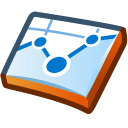Spotlight on Google Analytics features part 2: Custom Reporting
May 22nd, 2009 | Published in Google Analytics, Google Conversions

This week we are looking at Custom Reporting. This handy feature allows you to create customised reports that exactly meet your business needs. These reports will then be easily accessible within your Google Analytics profiles, in addition to the 80+ reports Google Analytics already offers.
What is Custom Reporting?
Custom Reporting allows you to create reports that contain only the information you want to see, displayed in a way you want to see it. You can choose from the various dimensions and metrics that appear in Google Analytics and simply drag and drop these components into your new report!
Here's an overview of what you can include in your report:
- Dimensions in Google Analytics usually refer to visitor or campaign attributes. Dimensions are usually displayed in text format. Examples include: campaign, keyword, city, language.
- Metrics refers to the values or numbers you want to see in your reports, such as bounce rate, time on site, total goal completion.
To find out more about the dimension/metric combinations that are possible visit this help centre article.
How do I create a Custom Report?
Once you know what kind of report you want you can quickly create this from within your Google Analytics account.
Next, select the option to 'create a new custom report':
Name your new report, so you can easily find it again, and then simply add the metrics and dimensions you want to the template by dragging and dropping. Select 'create report' to save. From now on you can easily access this report under 'Custom Reporting' menu on the left hand side of your profile interface.
Why would I use a Custom Report?
If you manage your company's website and need to compile reports for different stakeholders, Custom Reporting could make your life a lot easier!
Here are some examples:
- Your marketing team may want to see which countries/cities visitors to your site came from and which marketing campaigns drove them to your site. You can create a Custom Report showing this information and have it emailed to your colleague on a regular basis.
- Your manager may want to know which highly performing keywords could be converting even better. You can create a custom report showing bounce rate, revenue for e-commerce sites or goal completion for lead generation sites down to the keyword level. You could then focus web design and marketing efforts on reducing the bounce rate for these keywords, and therefore improving your conversion rate.
Hopefully you're now ready to create your own unique reports in Google Analytics. If you do want to learn more about Custom Reporting you can visit the Google Analytics help centre.
Next week we will explore Motion Charts and show you how to view your Google Analytics data in a multi-dimensional graph format, allowing you to visualise unusual patterns in your data or opportunities for growth in your business.
If you have any feedback about this post or suggestions for future posts we'd love to hear from you via
Posted by Evelyn O'Keeffe, Google Analytics Team